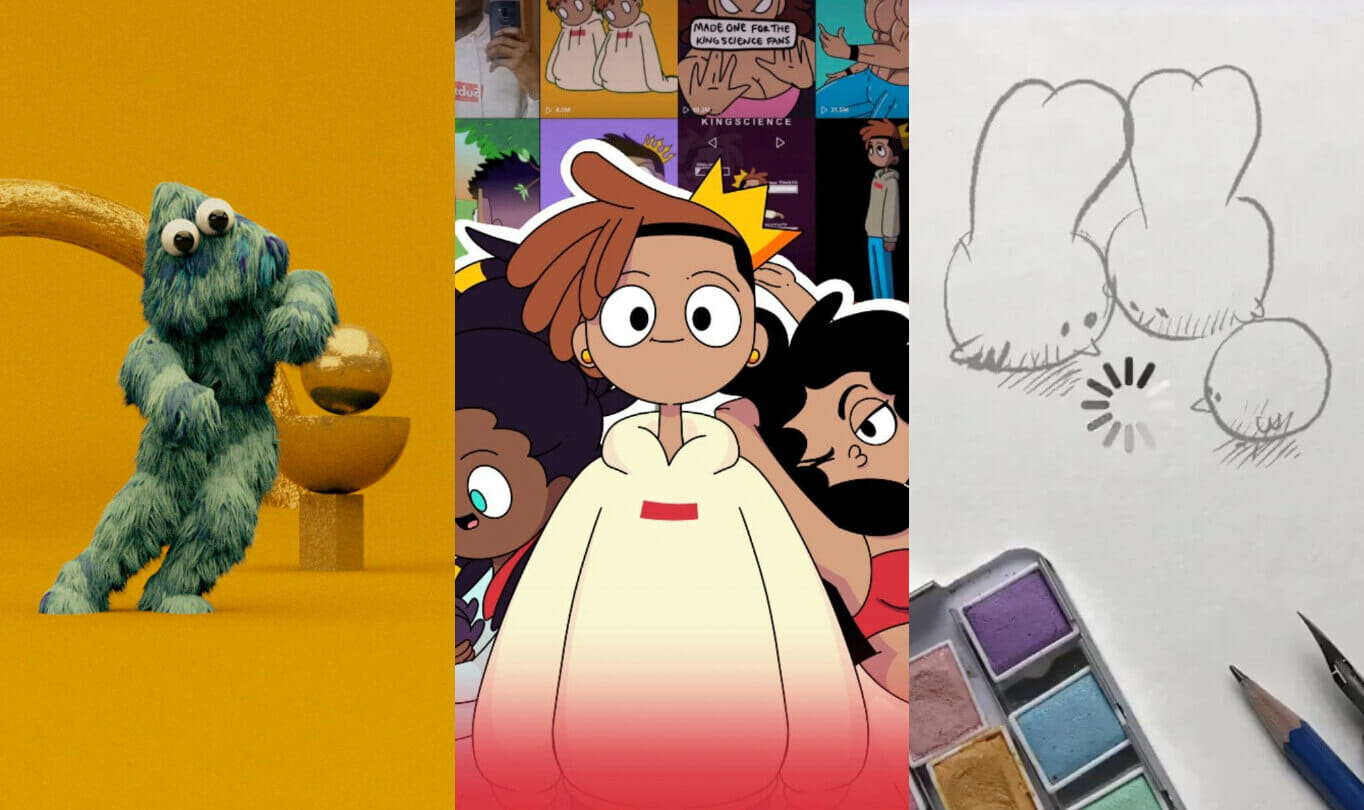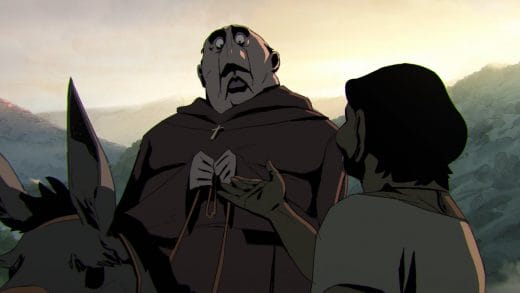
There is a behavioural shift happening between creators and their audiences, and along with it is a new focus on short-form content. The big platforms are placing their bets, with new services like Facebook Watch, Snap Originals and YouTube Originals emerging. As more of our viewing becomes streamed rather than programmed, we drift further away from the half-hour to hour-long blocks that used to define television and into a more dynamic place. In response, broadcasters are experimenting more with form and medium, opening up opportunities for a wider variety of voices and talent. Do TV and film executives have their eye on short-form social media creators for their next generation of showrunners?
If so, they would do well to start their search on TikTok. The video-sharing app, which allows for videos limited to a minute long, is the most downloaded App of 2020 and now boasts 850 million users. Its appeal comes from the ability it has to host situational humour. We see real moments play out, as well as real interactions and consequences. A myriad of scenarios limited only by the imagination of creators. Audiences find this relatable and accessible, creating a living, breathing culture that traditional formats struggle to keep up with. For example, Quibi, a short-form player which raised $1.75B, has since folded after a challenging launch. The platform’s all-star casting, high production values, and serialised content failed to connect with audiences where community-created content on TikTok succeeded.
What then, do modern audiences want? Consider the year we’ve had, and some things become clear. With human contact discouraged and live-action filming near impossible for many months, a huge gap has been left in the culture we consume. Collectively, we craved distraction and entertainment to keep our minds off the more serious stuff. Animators are among the artists who have stepped up to the plate, keeping us captivated with small moments of fun and familiarity, and reminding us to laugh once in a while. For their service, some have racked up avid followings that number in the millions. We spoke to some of the artists finding short-form success on social media. Discussing everything from influences to internet humour, we hear how they leverage their platforms into the wider world of animation.
King Science spent his time in the U.S. Military practicing discipline and drive. However, it wasn’t a career in the field that he had his heart set on. “I knew to work hard as I could to get to the success I wanted to get to”, he says over a video call. “When I joined the military, I knew that after my four years here, I would be on about a million followers in something. Then when I got out, I’d just do that”. For Science, his that was animation, and he set about learning the art and designing a character to act as his centrepiece.
Science used his character to document parts of his life: from everyday occurrences — disagreements with your mother, or speaking to a crush — to more serious subject matter, such as attending the Black Lives Matter protests. Through this story-telling, Science found popularity rapidly, and reached his goal. His TikTok reached the million follower landmark in just two months before a rapid rise to 9 million that has seen the 21 year old have talks with major studios and be recognised while walking through his neighbourhood.
“When the animation community got my attention on YouTube, it wasn’t necessarily the animation that got me hooked.” Science recalls the channels and creators he spent his teenage years watching.
The pace of YouTube comedy was just funnier to me. They were a lot more blunt. Internet comedy is so different to what you see on TV.
King Science
Like many in his digitally-native generation, Science was enticed by the creative freedom that social media offered. “YouTube leaves you with more creative control, which means more risk-taking. I would see things and think, ‘are you allowed to say that?’ But it would be like, really funny.”
Having a platform to freely publish ideas and access an audience presented an opportunity where traditional TV had fallen short, which was enticing to young creators, giving rise to a culture of snappy, short-form comedy now referred to broadly as ‘internet humour.’ An ever-evolving canon which has played out across platforms like YTMND, Newgrounds, YouTube, Vine, Twitter, 9Gag Snapchat and the now hugely popular TikTok. King Science, and his friend network of animators, artists and comedians, are among its new stars.
“TikTok has been working and it hasn’t failed me yet,” says Science. “If I had stopped at 2 million and then returned to YouTube, then I wouldn’t have made it to the almost 9 million followers I have now. You just keep pressing that button that gives you what you need until it doesn’t work.” Science gives a calculated answer as to why his content in particular resonates so strongly with his audience. It is not by accident; he’s confident and concise about what each piece of content needs to have in order to work. “I always make sure I have an exact goal in what my content is, and I make sure that it’s better than what I think anyone else can do, in a week. That timeframe, that sound, that trend. Executed in the right time better than what anyone else is doing.”
While he knows what he’s doing, Science talks on the subject in the kind of carefree, casual way that makes it all sound easy. “I just combine things that I liked and that I saw other people like every time I post!”
Science points to another, altogether more tried-and-tested trick to explain his success: Based loosely upon himself, Science’s character sports a trademark outfit of cream hoodie, blue jeans, and cartoon crown. It provides a relatable anchor that allows him to roam and explore other subject matter from his life, like his insomnia, or moving out of home: “Following a character is super easy. From my years watching YouTube, it’s clear people like following a character. So I decided to make sure I had a set character.”
Another artist who understands the appeal of the lovable character is Brooklyn-based artist, John McLaughlin. His “fuzzy dudes” inhabit stunning visual environments that he creates and shares with his 56,000 fans on Instagram. Often depicted dancing to modern pop music and in glossy 3D environments, his characters are shareable eye-candy.
“The world of Fuzzy Dude was born out of my interest and love of character design, but the inspiration behind my animations varies a lot and changes often,” says John, who is quick to cite his lionhead bunny Pepper as a primary source. One reason John is drawn to short-form is his own attention span. He is always, he says, “subconsciously catering” to the possibility that he will get distracted and move on to the next thing. He understands that his audience may be doing the same: “You’re rendering for the smallest screen, where people look at it for maybe half a second before scrolling away.”
John believes that, despite their alien appearance, his characters appeal to people due to a feeling of familiarity and humanity. He likens watching them to the feeling of watching reruns of Sesame Street, tapping into the undercurrent of nostalgia that drives many social media trends. Asked if social media has opened doors for him as an artist, John is quick to praise its power to connect people to his work.
“Big time. My first major artist collaboration was through Tumblr. I partnered with them as a creator for New York Fashion Week. Since then, a lot of work has come through Instagram Direct Messages and general discovery from the platform.” Through these channels of discovery, John has worked for major brands like Nike, an experience he’s grateful for: “My experience has been nothing but positive when it comes to working with larger brands.”
Navigating social media, by and large, is becoming more complicated, with many platforms having unique formats and codes. One has to be able to adapt across different channels.
“The big thing is adapting,” says King Science. “This is new to me, I’ve never typically made super short videos, so it’s actually really helping with comedic timing and it’s helping with visuals. When I do go back to making long-format videos, it’s going to be really hard to click that off.”
With our modern ‘feed’ culture, and content that we can simply swipe away, it’s unsurprising that timing and delivery take on utmost importance for him and other creators on the platform. “On TikTok, they can swipe. If they can do that and go to a whole other video, then you need to get their attention or they leave.”
Each platform brings unique technical problems, too. One of the biggest issues John McLaughlin encounters is, “dealing with and learning to embrace file compression,” and accepting that, while you may have render something, “on a large monitor where you see every little detail and get it perfect,” that same level of detail isn’t always going to be noticed by the audience on their smartphone. “Sometimes I don’t like the aspect ratio,” King Science describes of his experience scaling for mobile screens. “Because there’ll be some scenes where I’m like, ‘Why does the ceiling have to be so high?’ or ‘I don’t know how to frame this with two characters.’ But I’ve gotten used to it.” For him, his choices often come down to the practical. As a one-person animation outfit, the short-form format of TikTok just makes sense at this stage in his career.
I’m a one man animator until I get a team, so, it’s just the most logical thing.
King Science
To really understand the modern culture around short-form video, it helps to rewind back to Vine. The 6-second video sharing app was short-form in a nutshell. Internet-humour bottled up into its purest essence and disseminated at lightning speed. Vine has been defunct since 2017, but it is commonly accepted that the platform walked so that TikTok could run. With such a narrow time limit on clips, concerns about context, narrative and detail took a back-seat. Timing, delivery and energy were the drivers. Vine produced new viral moments seemingly every day, that caught on like popular playground trends. It gave birth to a style of humour so distinct that even today, some viewers on TikTok will brand the most satisfying or irreverent moments of humour ‘Vine energy.’ Understanding the DNA of a Vine could be instrumental in unpacking the huge popularity of its successor, and might provide some clues as to why we’re increasingly moving toward a short-form culture of entertainment.
“This area of social media is unique from other conventional media, like full-length movies,” Wahyu Ichwandardi, known to his fans as Pinot, tells me over email. “So when Vine released in 2013, with its limitations, like 6-second durations and the ability to only post video recorded within the app, I saw an opportunity to create a new audience with a new kind of storytelling.”
Pinot’s work on Vine incorporated hand-drawn sketches, animated then placed alongside real-world scenery. The interaction between sketched and life-like elements creates a satisfyingly short hit of action in each Vine. “With these new video platforms like TikTok or Byte, I can now create short animation myself, in a short production time, for an audience of hundreds or thousands.”
Today, Vine is a thing of the past, and Pinot is most active across Instagram and TikTok, where he shares mixed-media works and experiments with nearly half a million followers. He shares interesting thoughts about how the visual language of the internet has changed, since the time of Vine and before. “Instagram and other video platforms are a place where we can see how content and its audience evolve over time. All the animatic content we see, like memes, emojis and GIFs, are the conversational tools of the modern audience. Every animatic content and every pixel art animation I make also serves as a conversation tool for that audience.”
Pinot’s newer work explores a range of visual languages, and has recently incorporated pixel art using a variety of retro hardware devices such as Macintosh computers and Nokia handsets. In this era of Future Nostalgia, his usage of beige corporate desktops and ‘brick-phones’ exudes the kind of retro-factor that translates well in today’s heavily aestheticised social media culture. Like the ‘old tec’ of Phillip Reeve’s Mortal Engines, prized for its lost scientific and technological knowledge, the tech of our own past often serves as a treasured cultural artifact to those discovering it new. Pinot calls this style ‘low-tech.’
“The pixel art content is basically all my unfinished childhood projects and ideas,” he explains. “Now I have a chance to continue those projects, because the old low-tech style becomes a new aesthetic, and gains a unique appreciation.” In his animation, Pinot creates a kind of trickery where we see modern pop culture and memes shown through the pixelated screens of these early internet-era devices.
For me, the project is not just a nostalgia journey but also a tech history lesson for my children.
Pinot
For Pinot, looking backward is an important part of moving culture forward. “They joined me as a team when we created a lyric video for Twenty One Pilots with old software on a Macintosh computer.” Another low-tech Macintosh piece Pinot did in homage to Childish Gambino’s This Is America went viral in 2018.
Despite all of its advantages, it is possible to view this explosion of short-form as a symptom of the age of over-information. Theories abound of shortened attention spans, and on average, a person will scroll through 300ft of online content every day. One would be forgiven for wondering if we are losing our ability to concentrate on things meaningfully. Should animators be conscious of this in their work? The creators we spoke to gave optimistic answers in response.
“Animation delivers imagination better than other mediums,” Pinot suggests. “Short animation on social media has the whole package: expression, visual, audio, motion, story, color. Even in this short-attention span age on social media.”
For King Science, much of it comes down the medium of delivery. “I don’t think people’s attention spans are shortening,” he assures us. “The way I would start a TikTok is not the way I would start a YouTube video, nor is it the way I’d start a Netflix series. Because, people’s attention spans are different on each platform. On each medium, our brain realises what it’s doing and we respond to that.”
John McLaughlin ends by addressing another big issue of the social media age: Mental health, and the anxiety that can often come with sharing work and comparing your career against others online. “Try not to get too caught up in what others are doing by comparing your experience with theirs. No matter what you see, everyone is dealing with their own struggles and had to start somewhere.” This is sage advice for anyone looking to share their journey and build an audience online. The importance of going at your own pace, and not being put off by starting small.
“Often, even if an artist looks like they made it and are doing huge projects, they are struggling behind the scenes or grinding super hard to keep up,” John continues. “Look at work, be inspired, but in the end, do you.”



